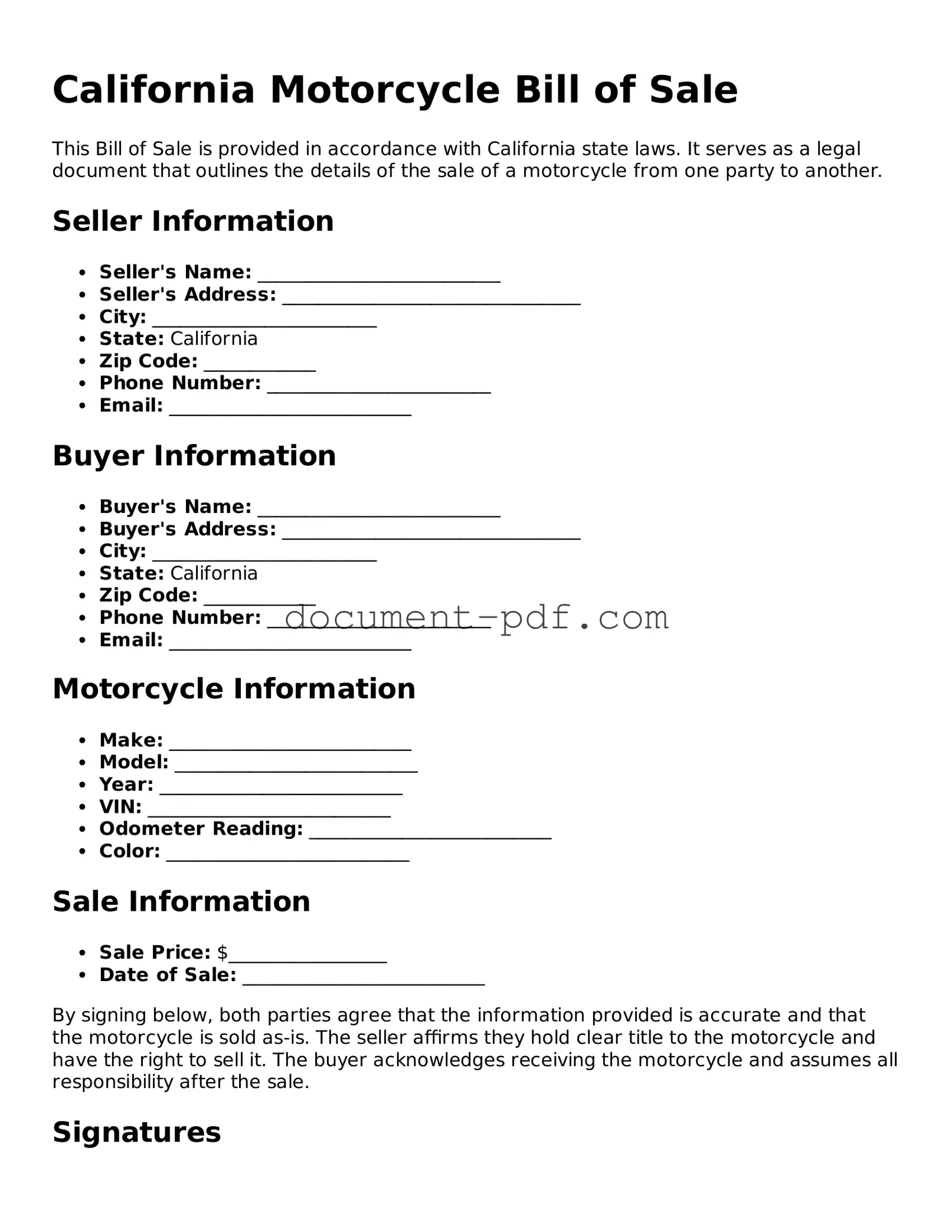The California Vehicle Bill of Sale is similar to the Motorcycle Bill of Sale in that both documents serve as proof of the transfer of ownership for a vehicle. This form is essential when selling or buying a car, as it provides details about the vehicle, including its make, model, and Vehicle Identification Number (VIN). Both documents require the signatures of the buyer and seller, ensuring that both parties acknowledge the transaction. This helps protect the interests of both parties involved in the sale.
The California Title Transfer form is another document closely related to the Motorcycle Bill of Sale. This form is necessary when ownership of a vehicle changes hands. It provides official recognition of the new owner and ensures that the previous owner is no longer responsible for the vehicle. Like the Motorcycle Bill of Sale, the Title Transfer form requires the seller to provide information about the vehicle and the buyer's details, making it a crucial component of the ownership transfer process.
The California Vehicle Registration form is also similar, as it is required for all vehicles, including motorcycles, to be legally driven on public roads. While the Motorcycle Bill of Sale focuses on the sale transaction, the Vehicle Registration form is about officially registering the vehicle in the new owner's name. This document includes vital information about the vehicle and the owner, ensuring that the vehicle is recognized by the state and that the owner has fulfilled their legal obligations.
The California Odometer Disclosure Statement is another important document related to the Motorcycle Bill of Sale. This form is necessary when a vehicle is sold, as it provides an official record of the vehicle's mileage at the time of sale. Both documents aim to protect buyers from fraud by ensuring that they receive accurate information about the vehicle's condition. The Odometer Disclosure Statement must be signed by both the seller and the buyer, similar to the Motorcycle Bill of Sale.
The California Application for Duplicate Title is similar in that it deals with ownership documentation. If the original title is lost or damaged, this application allows the vehicle owner to request a duplicate. This ensures that ownership can be verified and maintained, similar to how the Motorcycle Bill of Sale provides proof of ownership transfer. Both documents are essential for maintaining accurate records of vehicle ownership.
In tax-related matters, it is crucial for individuals and businesses to complete necessary forms to ensure compliance. One such essential document is the IRS W-9 form, which facilitates the accurate reporting of taxpayer identification information. This form is pivotal in various transactions, providing the necessary groundwork for proper income reporting and tax compliance, similar to the documentation processes involved in sales and transfers like the Motorcycle Bill of Sale.
Lastly, the California Affidavit of Non-Ownership is related to the Motorcycle Bill of Sale in situations where a seller may not have the original title but still wishes to sell the vehicle. This document allows the seller to declare that they do not possess the title while still providing a means to transfer ownership. This is particularly useful for buyers who may be concerned about the legitimacy of the sale, as it offers an additional layer of documentation to support the transaction.
